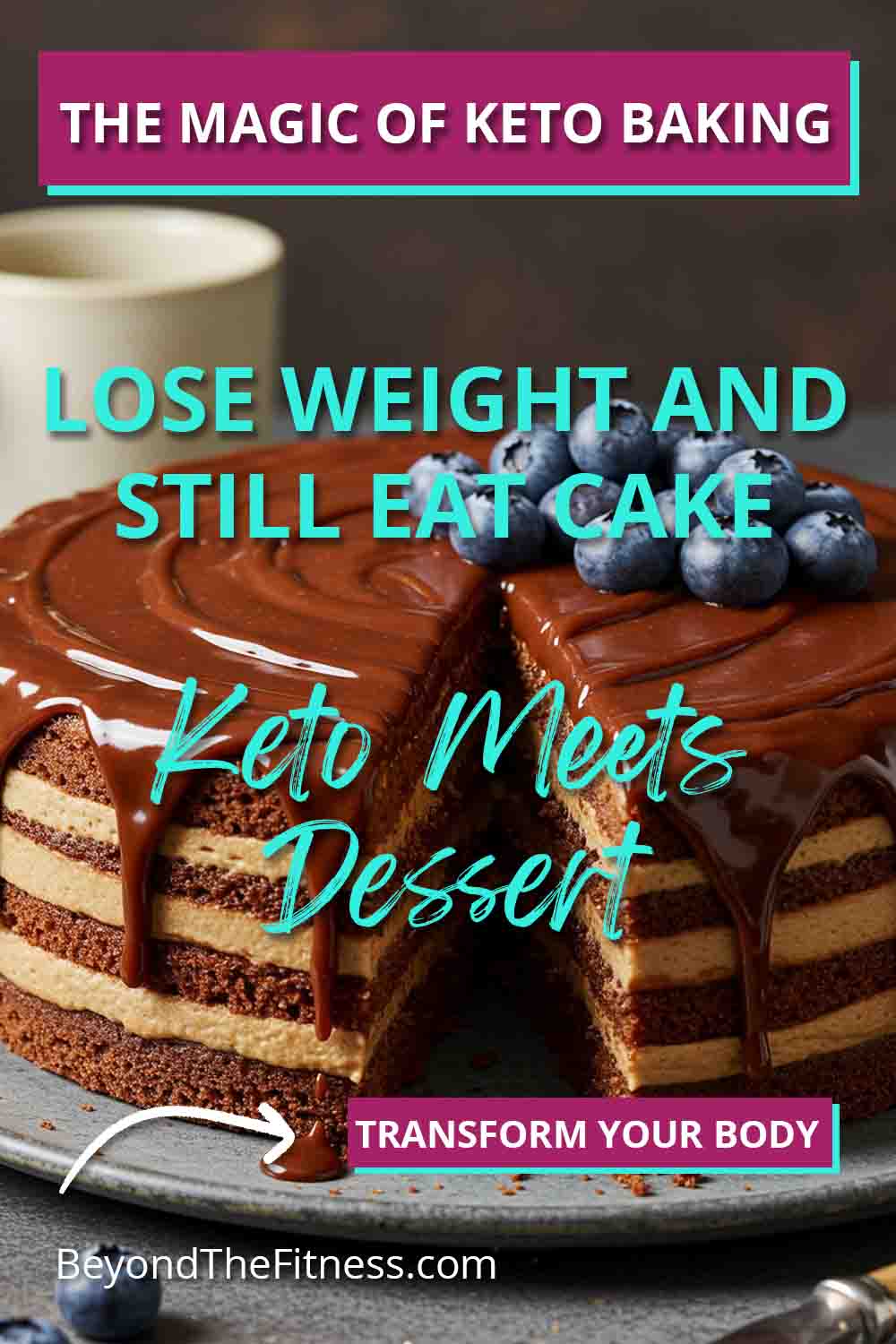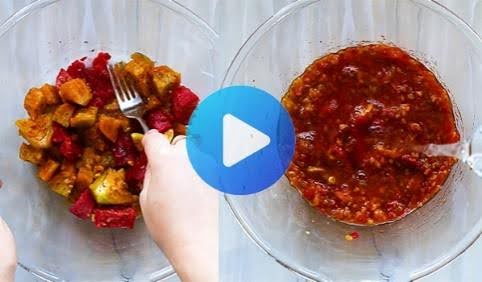It can feel really tough when you decide to lose weight. You change how you eat, start moving more, and feel good about your choices. But then it hits you. The craving for something sweet. Maybe it’s cake, cookies, or a brownie. It feels like you have to choose between your goals and enjoying a little treat. I know that feeling well. For years, I thought losing weight meant saying goodbye forever to my favorite baked goods. It seemed like a rule you just had to accept.
But what if I told you there might be a way to have something sweet, something that feels like a treat, without completely undoing your progress? This is where something called keto baking comes in. It sounds a bit like magic, doesn’t it? Eating cake while losing weight. Let’s talk about how it works and if it could be a helpful tool for you.
What Does Keto Mean Anyway?
You might have heard the word “keto” thrown around a lot. Keto is short for ketogenic. It’s a way of eating that changes where your body gets its energy from. Usually, our bodies love to use carbohydrates (like sugar and flour) for fuel because they are easy to break down. When you eat very few carbohydrates, your body needs to find a different fuel source.
You Might Be Interested In: Delicious Keto Meals Tailored to Your Needs With Custom Keto Diet
So, it starts breaking down fat instead. This process creates molecules called ketones, and your body uses these ketones for energy. When your body is mainly using ketones for fuel, it’s in a state called ketosis. The main idea behind the keto diet is to eat very low amounts of carbs, a moderate amount of protein, and a higher amount of healthy fats. This encourages your body to enter ketosis and burn fat. Many people find this helps them lose weight.
Why Bake the Keto Way?
So, how does baking fit into this? Traditional baking is full of carbs. Think about regular flour and sugar – they are pretty much the main ingredients in most cakes, cookies, and breads. If you’re trying to follow a keto plan, these ingredients are off the table.
This is where keto baking steps in. It’s all about finding clever ways to replace those high-carb ingredients with low-carb alternatives. Instead of regular flour, you might use almond flour or coconut flour. Instead of sugar, you might use sweeteners like erythritol or stevia that don’t raise your blood sugar.
The goal of keto baking is to create delicious treats that taste great but have very few carbs. This means you might be able to satisfy your sweet tooth without kicking your body out of ketosis or overloading on sugar. For many people I’ve worked with, being able to have a keto-friendly cookie or piece of cake now and then makes sticking to their healthy eating plan much easier in the long run. It helps manage those cravings that can sometimes lead to giving up altogether. It makes the whole process feel less restrictive and more sustainable.
Getting to Know Keto Baking Ingredients
Walking down the baking aisle might feel different when you’re looking for keto ingredients. Let’s break down some of the common players you’ll see in keto recipes.
Low-Carb Flours
This is probably the biggest swap. Regular white or wheat flour is very high in carbs. Keto baking uses alternatives made from nuts or seeds.
- Almond Flour: This is one of the most popular keto flours. It’s just finely ground almonds. It has a slightly nutty flavor and works well in cookies, cakes, and muffins. There’s also almond meal, which is coarser and includes the skins. Usually, recipes specify almond flour for a finer texture. It’s higher in fat and lower in carbs than regular flour.
- Coconut Flour: Made from dried, ground coconut meat, this flour is very high in fiber and absorbs a lot of liquid. You usually need much less coconut flour compared to almond or regular flour. It has a distinct coconut flavor, which can be nice in some recipes but might not be wanted in others. Often, recipes use a mix of almond and coconut flour to get the right texture.
Keto-Friendly Sweeteners
Sugar is a big source of carbs, so keto baking uses sweeteners that provide sweetness without the carbs or the blood sugar spike.
- Erythritol: This is a type of sugar alcohol. It tastes quite similar to sugar, maybe about 70% as sweet, and has almost zero calories. It doesn’t usually affect blood sugar levels. Some people find it has a slight cooling sensation. For some, consuming large amounts might cause digestive upset, like bloating or gas, so it’s good to start small.
- Stevia: This is a natural sweetener derived from the stevia plant. It’s very sweet, much sweeter than sugar, so you only need a tiny amount. It has no calories or carbs. Some people notice a slightly bitter aftertaste, especially if they use too much. It often comes in liquid or powdered forms.
- Monk Fruit Sweetener: Another natural, zero-calorie sweetener, monk fruit comes from a small green melon. Like stevia, it’s much sweeter than sugar and doesn’t raise blood sugar. It generally doesn’t have the aftertaste that some people notice with stevia. It’s often blended with erythritol to make it measure more like sugar.
- A Note on Others: You might see other sweeteners like xylitol (careful, it’s toxic to dogs) or maltitol. I generally advise clients to be cautious with maltitol, as it can still raise blood sugar for some people and often causes digestive issues. Always read labels.
Healthy Fats
Fat is a key part of the keto diet, and it plays a big role in keto baking too, adding moisture and richness.
- Butter: Good old butter is keto-friendly and adds great flavor and texture to baked goods. Grass-fed butter is a great choice if you can find it, as it has a better fatty acid profile.
- Coconut Oil: This adds moisture and a subtle coconut flavor. Choose unrefined for more coconut flavor or refined for a neutral taste.
- Avocado Oil: This has a neutral flavor and works well in recipes where you don’t want the taste of coconut or butter to dominate.
- Other Fats: Cream cheese, heavy cream, and even lard can be used in keto baking depending on the recipe.
Binders and Thickeners
Without gluten (the protein in wheat flour that gives structure), keto baked goods need something else to hold them together.
- Eggs: Eggs are keto-friendly and act as a great binder. They also add moisture and richness.
- Psyllium Husk: This is a type of fiber that absorbs water and creates a gel-like substance. It can help give keto bread a more traditional texture. A little goes a long way.
- Xanthan Gum: This is a common food additive used as a thickener and binder. In keto baking, a small amount (like 1/4 to 1/2 teaspoon) can improve the texture of cookies and cakes, making them less crumbly.
Leavening Agents
These help your baked goods rise.
- Baking Soda and Baking Powder: These work the same way in keto baking as they do in traditional baking. Just check the labels on baking powder to make sure it doesn’t contain added starches.
Flavor Enhancers
Don’t forget the flavors.
Introducing: Benefits of Custom Meal Plans With Keto Diet
- Vanilla Extract: A staple in most baking. Make sure it’s pure vanilla extract without added sugar.
- Unsweetened Cocoa Powder: For chocolatey goodness without the sugar.
- Spices: Cinnamon, nutmeg, ginger – all great for adding flavor.
- Sugar-Free Chocolate Chips: Look for brands sweetened with keto-friendly sweeteners like erythritol or stevia.
Understanding these ingredients is the first step. It helps you know what you’re looking for in recipes and why certain things are used.
Tips for Happy Keto Baking
Keto baking can sometimes feel a bit different than traditional baking. The ingredients behave differently. Here are some tips I share with my clients to help them get started and avoid common frustrations.
- Measure Carefully: This is important in all baking, but maybe even more so with keto flours. Coconut flour, especially, is super absorbent. Using even a little too much can make your final product dry and dense. Using a kitchen scale for accuracy can be really helpful.
- Don’t Expect Exact Swaps: You usually can’t just swap almond flour 1:1 for regular flour in a traditional recipe and expect it to work. Keto recipes are specifically developed for these ingredients. Similarly, swapping almond flour for coconut flour (or vice versa) in a keto recipe often requires adjusting the liquid amounts and other ingredients. Stick to the recipe first, especially when you’re learning.
- Avoid Overmixing: Almond flour doesn’t contain gluten. Overmixing traditional batter develops gluten, which can make things tough. While that’s not an issue here, overmixing almond flour batter can sometimes make the final product oily or dense. Mix until just combined.
- Watch Baking Times and Temperatures: Keto baked goods can sometimes brown faster on the outside before the inside is fully cooked. This is partly due to the nature of nut flours and keto sweeteners. Keep an eye on things. Sometimes lowering the oven temperature slightly and baking a bit longer helps. Using an oven thermometer ensures your oven is actually at the temperature you set it to.
- Manage Your Texture Expectations: Keto baked goods can be delicious, but they might not have the exact same texture as their high-carb counterparts. Almond flour can lead to a denser, moister crumb, while coconut flour can sometimes be a bit dry if not balanced with enough liquid and fat. Appreciate them for what they are – a tasty, low-carb alternative.
- Start Simple: Don’t try to tackle a complex, multi-layered keto cake for your first project. Start with something straightforward like keto chocolate chip cookies, simple muffins, or a mug cake. This helps you get a feel for the ingredients and techniques without getting overwhelmed.
- Let Things Cool: Keto baked goods are often more fragile when they are hot right out of the oven. Letting them cool completely in the pan or on a wire rack helps them firm up and hold their shape better. Patience is key here.
- Store Properly: Because they often lack preservatives and contain fats that can spoil, keto baked goods are usually best stored in an airtight container in the refrigerator. Some items also freeze well.
Keto baking can be really rewarding. It just takes a little practice and understanding of how these different ingredients work together. Don’t be discouraged if your first attempt isn’t perfect. Learn from it and try again.
Ideas for Keto Treats You Can Bake
Okay, let’s talk about the fun part – what can you actually make? The possibilities are wider than you might think.
- Keto Chocolate Chip Cookies: Probably one of the first things people want to try. Made with almond flour, butter, keto sweetener, eggs, and sugar-free chocolate chips, they can be soft and chewy or slightly crisp depending on the recipe. A classic treat made keto.
- Keto Blueberry Muffins: Using almond or coconut flour (or a blend), these can be moist and flavorful. Adding fresh or frozen blueberries (in moderation, as berries do have some carbs) gives that familiar burst of sweetness. Perfect for a quick breakfast or snack.
- Simple Keto Mug Cake: Need a quick fix? Mug cakes are awesome. You mix the ingredients (like almond flour, cocoa powder, sweetener, egg, and a little oil or butter) in a mug and microwave it for a minute or two. Instant single-serving cake.
- Keto Brownies: Rich, fudgy brownies are definitely possible on keto. Using unsweetened cocoa powder, keto sweetener, butter or coconut oil, eggs, and almond flour, you can create a decadent dessert. Some recipes even add avocado for extra fudginess and healthy fats.
- Keto Cheesecake: Cheesecake adapts surprisingly well to keto. The crust can be made from almond flour and butter. The filling uses cream cheese, eggs, keto sweetener, and vanilla. You can enjoy a creamy, rich cheesecake without the sugary graham cracker crust. Top with a few berries or some sugar-free whipped cream.
- Keto Bread: While maybe not a “treat” in the sweet sense, having a slice of keto bread for toast or a sandwich can feel like a huge win. Recipes often use almond flour, eggs, psyllium husk, or other ingredients to mimic the texture of bread. The taste and texture vary quite a bit between recipes, so you might need to try a few to find one you like.
- Keto Pancakes or Waffles: Yes, breakfast favorites can be made keto too. Using almond or coconut flour, eggs, cream cheese, or heavy cream, you can whip up low-carb pancakes or waffles. Serve with butter and maybe some sugar-free syrup or berries.
These are just a few examples. As keto baking has become more popular, you can find recipes for almost anything, from donuts and scones to pies and elaborate cakes. The key is finding well-tested recipes from reliable sources.
How Keto Baking Fits into Weight Loss
Now, the big question: Can eating keto cake actually help you lose weight? It sounds too good to be true. Here’s how I explain it.
Keto baking itself doesn’t magically cause weight loss. Weight loss fundamentally comes down to consuming fewer calories than your body burns over time, creating a calorie deficit. However, keto baking can be a powerful tool to help you stick to your overall weight loss plan, especially if that plan involves a ketogenic approach.
Here’s how:
- Managing Cravings: Sweet cravings are a major reason why people fall off their healthy eating plans. If you feel completely deprived of treats, you might be more likely to eventually have a large binge on high-carb, high-sugar foods, which can really set you back. Having a keto-friendly baked good allows you to satisfy that craving in a controlled way, using ingredients that align with your low-carb goals. It can prevent the feeling of deprivation.
- Staying in Ketosis (if that’s your goal): If you are following a strict keto diet to stay in ketosis, eating traditional baked goods will quickly kick you out of that fat-burning state due to the high carb load. Keto baked goods are designed to have minimal impact on blood sugar and ketone levels, allowing you to enjoy a treat without disrupting your metabolic state.
- Psychological Boost: Knowing you can have a cookie or a piece of cake (a keto version) can make the whole process of dietary change feel less daunting and more sustainable. It removes the “never again” feeling about certain foods, which can be psychologically difficult.
- Ingredient Control: When you bake your own keto treats, you know exactly what’s going into them. You control the type and amount of sweetener, the quality of fats, and you avoid hidden sugars or unhealthy additives often found in store-bought “diet” products.
However, there’s a crucial point here: Portion control still matters. Keto baked goods might be low in carbs, but they are often calorie-dense due to the high fat content (from nut flours, butter, oils). Eating large amounts of keto treats, even if they fit your carb limits, can still contribute too many calories and hinder weight loss.
Think of keto baking as a way to have a treat, not a staple food. Your main focus should still be on nutrient-dense whole foods like non-starchy vegetables, healthy proteins (meat, fish, poultry, eggs), and healthy fats (avocado, olive oil, nuts, seeds). Keto baked goods are for those occasional moments when you want something special.
Special Considerations for Women
When talking about diet and weight loss, it’s important to remember that women’s bodies can have unique responses and needs. Hormones play a big role in everything from appetite and cravings to metabolism and fat storage.
- Hormones and Cravings: Many women experience increased cravings, especially for sweet or carb-rich foods, at certain times in their menstrual cycle. Keto baking can be a lifesaver during these times. Having a satisfying, low-carb treat available can help manage these hormone-driven cravings without derailing progress.
- Nutrient Density: While keto focuses on macronutrients (carbs, protein, fat), micronutrients (vitamins and minerals) are equally important for overall health, energy levels, and hormone balance. When following any restrictive eating pattern, including keto, it’s crucial to ensure you’re getting enough essential nutrients. Focus on incorporating nutrient-dense keto foods like leafy greens, avocados, nuts, seeds, eggs, and quality proteins. Keto baking can use ingredients like almond flour (vitamin E, magnesium) and eggs (choline, vitamin D), but they shouldn’t replace whole foods.
- Impact on Menstrual Cycles: Some women find that starting a very low-carb diet like keto can affect their menstrual cycle, causing changes in regularity or flow. This isn’t universal, but it’s something to be aware of. Often, ensuring adequate calorie intake and not restricting carbs too drastically can help. If you experience significant changes, it’s always best to talk with your doctor.
- Healthy Fats for Hormones: Healthy fats are incredibly important for hormone production. Keto naturally emphasizes fats, but focusing on quality fats (like those from avocados, olive oil, nuts, seeds, fatty fish, grass-fed butter) is key for supporting hormonal health. Keto baking often incorporates these healthy fats.
- Listening to Your Body: Every woman’s body is different. What works wonderfully for one person might not be the best fit for another. Pay attention to your energy levels, digestion, mood, and cycle. Adjust your approach as needed. Maybe strict keto isn’t right for you, but incorporating some keto baking principles (like using less sugar and healthier flours) could still be beneficial.
Baking Keto into a Healthy Life
So, can you lose weight and still eat cake? With keto baking, the answer can be yes, but with some important conditions. Keto baking isn’t a magic wand, but it can be a really useful part of your toolkit for building a healthier lifestyle that feels enjoyable and sustainable.
It works best when it’s part of a bigger picture. This includes:
- An Overall Healthy Diet: Prioritize whole, unprocessed foods. Fill your plate with colorful vegetables, lean proteins, and healthy fats. Keto treats should supplement this foundation, not replace it.
- Regular Physical Activity: Exercise is crucial for weight loss, muscle building, heart health, mood, and so much more. Find activities you enjoy and make them a regular part of your routine.
- Mindful Eating: Pay attention to your hunger and fullness cues. Savor your keto treats slowly and mindfully, rather than eating them distractedly. This helps you feel satisfied with a smaller portion.
- Consistency: Lasting results come from consistent habits, not short-term extremes. Integrating keto baking allows for flexibility and enjoyment, which can help you stay consistent with your healthier choices over the long term.
Keto baking offers a way to navigate cravings and enjoy familiar comforts without the high carb load of traditional baking. It requires learning about new ingredients and techniques, but the reward can be delicious treats that support, rather than sabotage, your health and weight loss goals. It’s about finding that balance where you can nourish your body well and still enjoy the sweet moments in life.
Related YouTube Video
Final Thoughts
Thinking back, the idea of giving up cake or cookies forever felt like a punishment for wanting to be healthier. Discovering keto baking changed that perspective for me and for many women I’ve helped. It showed that making healthier choices doesn’t always have to mean deprivation. It can mean getting creative, finding smart swaps, and learning new ways to enjoy food. Baking a keto treat can be a small act of self-care, a way to honor a craving without abandoning your goals. It’s a reminder that the journey to better health can, and perhaps should, include things that bring you joy, even if it’s just a delicious, low-carb cookie.







